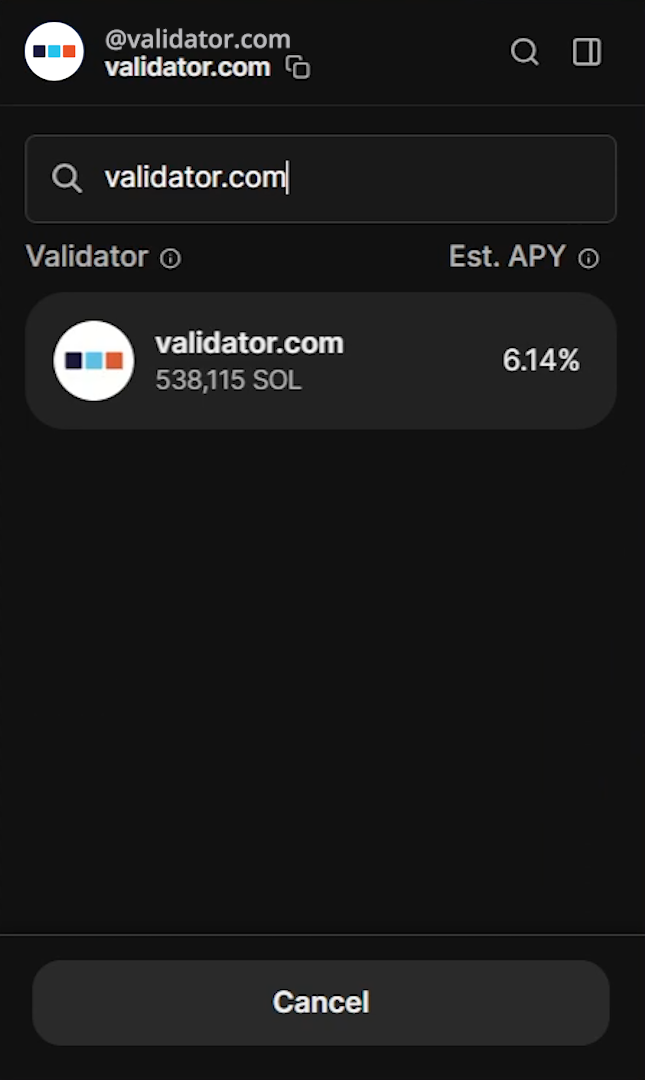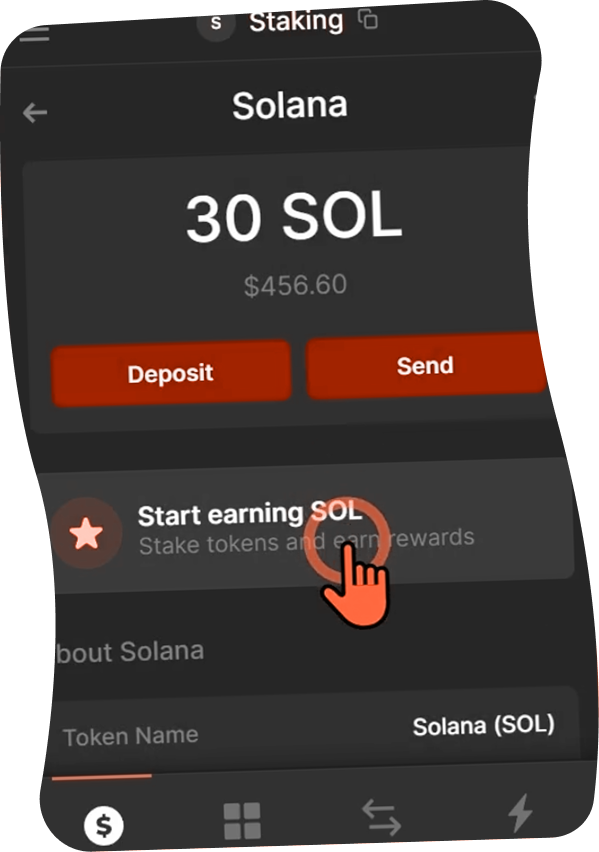validator.com
Earn staking rewards with your feet up.

A brand that ...
rewards you while keeping Solana Strong
Established in
2022
Current Staked SOL
510,181
Annual Percentage Yield
8.2% APY
The Team
Here to educate and help the ecosystem.

HFP
Founder
A 17-year branding leader, HFP identified Bitcoin's potential early and, by 2021, recognized Solana's capacity to deliver real-world decentralization. His strategic direction established validator.com's brand and continues to guide its long-term positioning.

Sebastian Montgomery
General Manager
Sebastian started the validator in mid-2022 and leads its growth, operations, and content strategy. A prominent voice in the Solana ecosystem, he has produced more than 1,000 educational videos and continues to drive the vision for the next 1,000 — advancing global understanding of decentralized infrastructure and validator.com

Dan Phillips
Business Developer
Dan is a seasoned professional dedicated to building at the intersection of traditional business and Web3. He holds a Bachelor's degree in Economics and has a strong background in consulting and sales, having worked as an alumnus of industry-leading firms including KPMG, Oracle, and HubSpot.

The Intern
The intern keeps validator.com plugged into Solana's culture and Crypto Twitter. Mixing research, creativity, and humor, into content you want to keep up to date with.

Pedro
Lead Editor & Artist
Pedro leads the creative production at validator.com, crafting visually engaging content that informs, inspires, and connects with audiences. His work focuses on expanding the reach of validator.com and driving broader awareness and adoption of the Solana ecosystem through high-impact storytelling and design.

Chris
Lead Researcher
Steers our content research, breaking Solana updates into plain, useful takeaways.
Link Hub
Find what you want faster.
Security
Enterprise-grade security measures
Follow us for latest updates
Tutorials
How to stake?
Discord
Chat with our community
The Team
People who make things work.
Support
Read our documentation to know more.
Vault
Secure storage for your assets
YouTube
Watch tutorials and updates
Stake in 30 SECONDS
Your coins. Your custody. Your rewards.


Stake in 30 SECONDS
Your coins. Your custody. Your rewards.
Calculate Staking Rewards
This calculation is based on the current ~ 8.2% APY.
Your
SOL
the current
8.2% APY
8.20 SOL
yearly rewards
*5% on staking rewards, 8% on JITO MEV earnings.
